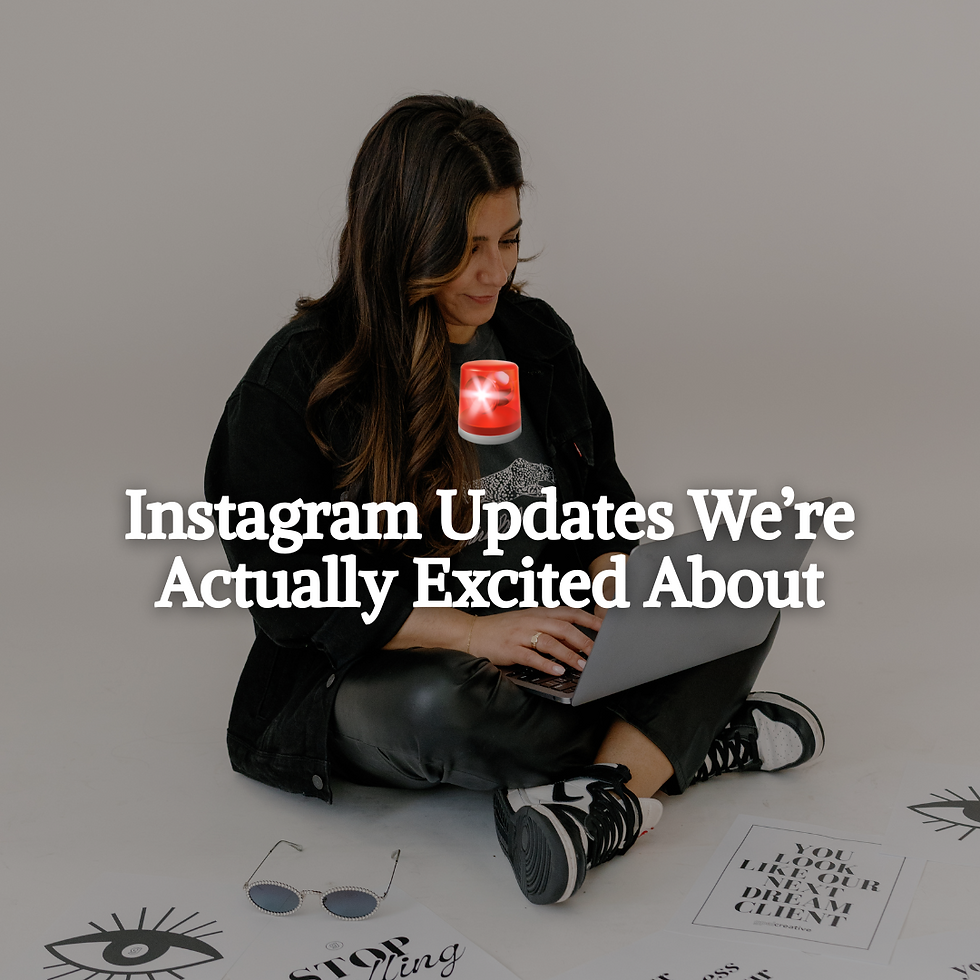Why Everyone’s Obsessed with Unfiltered Authenticity ✨
- Francesca DiCaterino
- Sep 8
- 2 min read
Remember when Instagram was all about latte art and perfectly staged “candid” shots? Yeah… those days feel ancient. Now, the internet is obsessed with something totally different: raw, real, and sometimes downright messy content. Think: random photo dumps, chaotic TikTok edits, and iPhone-shot videos that feel like a FaceTime call with a friend.
But here’s the big question: How can brands capture that unfiltered vibe without looking unprofessional? Let’s chat. 👇
Why Authenticity Is Having a Moment
Unfiltered stories, photo dumps, casual videos - people can’t get enough. Why? Because polished perfection started to feel… fake.
We’re burnt out on perfection. Think: The “Instagram grid aesthetic” of 2018 - all neutral tones, matching borders, and carefully edited feeds. This might have looked sleek, but it started feeling repetitive and out of touch. People got tired of brands showing a version of life that felt unattainable.
Relatability > aspiration. Duolingo is a perfect example. Their TikTok isn’t filled with polished product ads; instead, their owl mascot does chaotic, funny skits.
Social media is casual now. Blurry concert photos, “camera roll dump” posts, or a quick TikTok vlog filmed in a car feel authentic. That’s why content like Emma Chamberlain’s unedited YouTube vlogs resonate. They feel like you’re in on a personal moment instead of being sold something.
👉 Bottom line: audiences don’t want another “brand.” They want humans they can relate to.
How Brands Can Nail the “Unfiltered but Professional” Vibe
Okay, but let’s be real (pun intended 🤭): if you’re a business, you can’t just start posting blurry selfies and call it a strategy. Here’s how to hit the sweet spot.

Show the process, not just the product. Starbucks does this well - they’ll show baristas experimenting with seasonal drinks before they hit the menu. That peek behind the curtain makes people feel included.

You don’t need a film crew. Chipotle went viral multiple times by posting simple, iPhone-shot TikToks of menu hacks and customer reactions. Low-effort content often feels more authentic and performs better.

Authenticity isn’t just about what you post - it’s about how you interact. Fashion brands like Aritzia or SKIMS frequently repost customer content, showing real people wearing their products instead of just studio models.

This isn’t about being sloppy - it’s about balance. Apple is the perfect example. Their branding is sleek and polished, but on TikTok, they highlight creators casually filming with iPhones in everyday settings. It’s real and professional.
The Future of Authentic Branding
The obsession with unfiltered authenticity isn’t just a phase - it’s a reaction to years of curated perfection. And it’s not going away.
Audiences are craving connection over curation, and the brands that get it right are the ones that will win. So here’s your takeaway: you don’t need to be perfect to be powerful. Show up as you are, let your audience in, and let your personality shine through the pixels.
Because in 2025, being real isn’t optional - it’s the expectation.





Comments